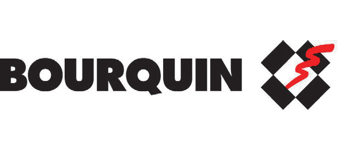Infos Bourquin
Corrugated cardboard raw paper
Basically, a distinction is made between paper used for corrugating and that used for gluing to the corrugated material:
– Corrugating papers
– Liner papers (also called smooth webs or liners)
A further distinction is made according to the origin of the paper fibres, which always consist of organic material.
– Papers based on primary fibres basically consist of cellulose or semi-cellulose fibres. For economic and environmental reasons, up to 35% wastepaper fibres are added.
– Papers based on wastepaper consist of fibres obtained from different quality waste papers (secondary fibres).
These differences are important for understanding pricing, the physical properties of the various grades of wastepaper and the possible uses of the finished corrugated cardboard packaging.
Corrugating papers
– Fluting (unbleached semi-chemical pulp paper made from hardwood with at least 65% primary fibre content)
– Corrugating medium (mainly made from sorted wastepaper – WP)
– Schrenz (paper made from mixed ordinary wastepaper such as printing waste, grey cardboard, cardboard tubes, etc.)
Liner papers
– Kraftliner (sulphate pulp papers, natural brown or with bleached top layer (white top), made from coniferous wood with at least 80% primary fibre content).
– Testliner (mostly two-ply papers made from different paper pulps on a WP basis, with the top layer containing higher quality fibre material than the reverse side. The fibre composition is not specified; instead, the strength properties are defined and also guaranteed).
– Blanket paper (paper made from mixed ordinary wastepaper)
Paper thicknesses
The paper thickness is defined by the grammage – g/m2. For corrugated cardboard raw papers, it normally ranges between 100 and 440 g/m2.
Auxiliary materials
– Adhesives
– Tear tapes (special corrugated cardboard packaging is equipped with a tear tape to aid opening).
The standard corrugated cardboard grades
The physical properties of the different corrugated cardboard grades are precisely defined. They are specified by most manufacturers in the form of quality lists. These values represent mean values according to DIN 55468 including the confidence interval; they are monitored by the EMPA.
The profile
Viewed in cross-section, the corrugated paper follows a sine curve. This is defined by flute pitch and flute height. As a rule, the ratio of these variables is approx. 2:1. The flute height for single-flute corrugated cardboard or the sum of several flute heights for multi-flute corrugated cardboard approximately determine the thickness of the finished corrugated cardboard.
The feed factor – also known as the feed coefficient or corrugation factor – indicates the additional amount of linear metres of corrugated paper which must be included per metre of finished corrugated cardboard.
Commercially available flute profiles:
Abbreviation Designation Flute height
A Coarse flute 4.0 – 4.8 mm
C Medium flute 3.2 – 3.9 mm
B Fine flute 2.2 – 3.0 mm
E Micro flute 1.0 – 1.8 mm
The raw material composition
The requirements of the finished corrugated cardboard packaging determine the paper used in the cardboard production.
The requirements of the packaging in turn result from the conditions imposed by
– The type of goods to be packaged
– The product manufacturers
– The distribution of goods (climate, modes of transport, loading and unloading facilities, storage, trade, etc.)
– The consumption of goods / convenience
– The disposal of the packaging
The printed corrugated cardboard product
Printing on corrugated cardboard may seem problematic because we are dealing with a material which is voluminous and elastic. However, in cooperation with printing form and ink manufacturers, it has been possible to fix an attractive and clean print image on this material as well.
The process is called flexographic printing, where the letterpress form is made from photopolymer plastics or rubber. Flexographic ink with pigments introduced in a low-viscosity solution of water and alcohol has the advantage of drying immediately after application. The importance of this becomes clear when you know the conditions under which the printed corrugated cardboard sheet passes through the production lines:
– Contact with leading machine parts
– Extremely high machine speeds
– Sliding over die-cutting tools
– Sheet friction during automatic stacking.
What we expect from corrugated cardboard
– Protective function
– Rationalisation function (processes, packaging, storing, transporting, trading, consuming)
– Communication function (advertising, description of goods, consumption instructions, instructions for use)
